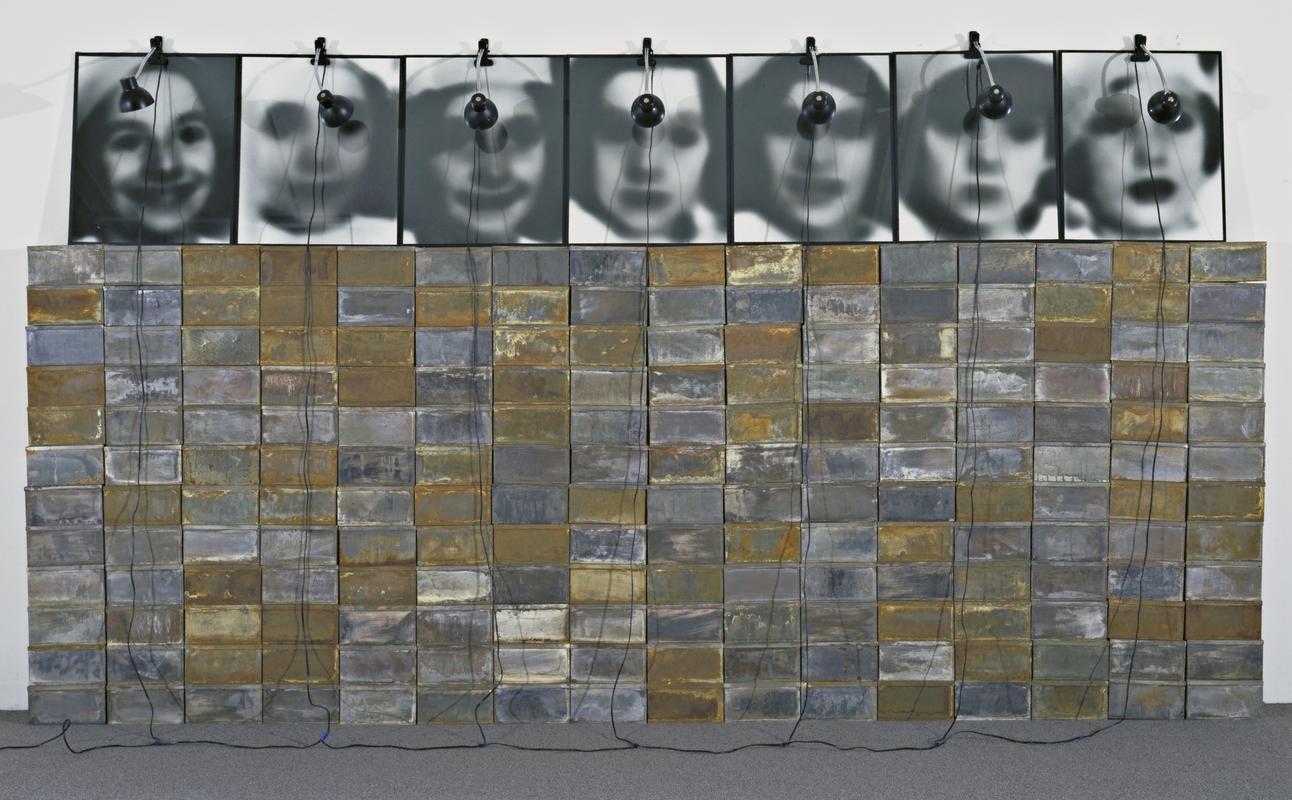More about The Storehouse

Contributor
The Storehouse by Christian Boltanski tricks you into a state of mourning.
Made of tin biscuit boxes holding scraps of fabric, enlarged, memorial-esque pictures of young girls and lights that spotlight the pictures, this piece has all the feels of a funerary shrine. Every part of this work is curated to make you jump to the conclusion that these girls were victims of the Holocaust. “These boxes are corroded as if marked by time and are infused with symbolic associations—they evoke reliquary boxes, archival containers, and funerary urns. The black-and-white photographs connote another era; out of focus, they constitute a visual analogy to memory, fading over time. Electric lights illuminate the seven faces like devotional candles, underscoring the effect of a memorial, an orchestration of signifiers indicating loss and remembrance.” All in all, it’s wildly depressing and the kind of piece that makes you want to bow your head and be really, really quiet. You feel the urge to light a candle and sing, obviously resisting that urge because that would be a weird thing to do in the museum.
But then you find out that it’s the opposite of what you were led to believe. The photographs are of random girls from newspapers and magazines and the tin boxes were distressed by Boltanski, and not by time, love or hardship. It’s all a scam. At this point, you’re feeling pretty betrayed and led on. Years of trust issues are resurfacing when you realize that it’s definitely your fault that you believed it was a funeral shrine and that this artwork demanded your attention and respect. This, of course, makes you give it more attention and respect. And therein lies the brilliance of Christian Boltanski my friends.
Sources
- "Christian Boltanski." Archives and Creative Practice. Web. 16 Jan. 2018. http://www.archivesandcreativepractice.com/christian-boltanski/
- "Christian Boltanski. The Storehouse. 1988 | Moma." The Museum of Modern Art. Web. 16 Jan. 2018. https://www.moma.org/collection/works/80857
- Moroz, Sarah. "Christian Boltanski: The Artist Counting The Seconds Till His Own Demise." the Guardian. N.p., 2015. Web. 16 Jan. 2018. https://www.theguardian.com/artanddesign/2015/oct/26/christian-boltansk…











